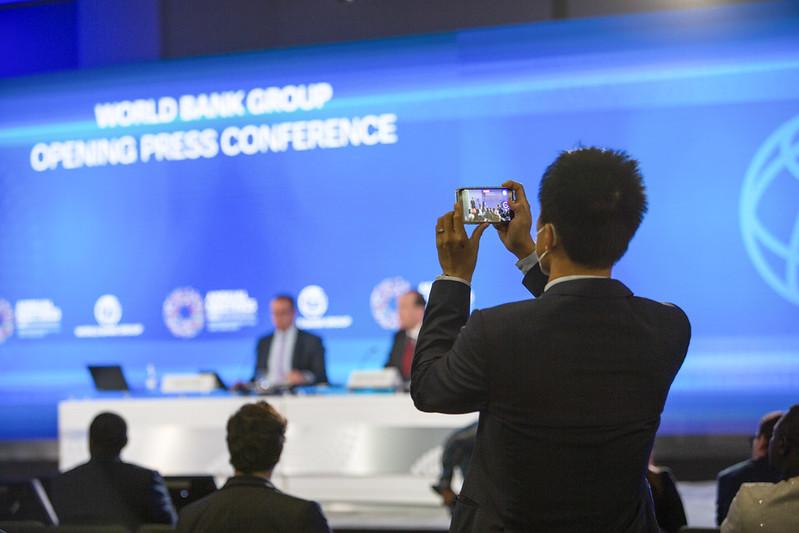The World Bank will soon pick a new president. With the world facing a confluence of climate, debt, energy and security crises, the leadership change comes at a pivotal moment for the institution. A more active leader could put the bank in pole position to assist countries in crisis, help fight climate change and facilitate cooperation between the United States and China, despite their escalating rivalry. But to do that, the new president must avoid the traps into which their well-intentioned predecessors have fallen.
The leadership race has moved quickly. A week after current president David Malpass announced on 15 February that he would step down, the World Bank’s executive board announced that nominations would be accepted until 29 March and urged countries to nominate women. But within a day of the board’s statement, the US announced that its candidate would be Ajay Banga, effectively ending the real contest, given that every World Bank president has been the US nominee (likewise, the International Monetary Fund’s managing director has always been a European nominee).
Banga is certainly qualified for the job. As the former CEO of Mastercard, he has experience running a global business with staff delivering services all over the world. He has also worked in microfinance and advised US Vice President Kamala Harris.
But the World Bank is a large and complex organisation whose mission is to deliver services and financing to its most needy members. As such, its new leadership must be guided by several practical imperatives.
First, the president should not be tempted to embark on yet another reform of the organisation. Instead, they should focus on making a real difference to those the bank exists to serve. In the past, some World Bank presidents immediately hired advisers to transform the bank itself, devoting enormous resources to changes driven by empty promises to ‘save money’ or ‘deliver better results’. This is a tempting way to make one’s mark in a hurry, but it is far better to drive the bank to deliver on two or three urgent priorities. Former presidents have underestimated their power to achieve change by recognising excellence and promoting innovators from within the bank.
Second, the new president must lead on behalf of all countries. That is easier said than done. In theory, the president is selected by the executive board and leads the organisation on behalf of all the countries that belong (and contribute) to it. In practice, however, World Bank presidents serve at the pleasure of the US Treasury secretary, who appoints them and decides whether to reappoint them for a second term or even pressure them to retire early. This limits the bank’s accountability to its other shareholders.
To be effective, the next president must refrain from taking orders from the White House. Instead, they should use their position to inform, explain, persuade and cajole an American government that doesn’t always understand the bank’s role. When US Senate Republicans accuse the bank of giving US taxpayers’ money to China, the organisation needs to make clear that it is not US taxpayers’ money, and it is not a gift. Over the years, the US itself has urged the World Bank to self-fund by charging China and other emerging economies a premium to borrow, and this generates considerable revenue for the bank.
The third imperative for the next president is not to take the organisation’s mandate as given. The World Bank can and should lead in responding to crises rather than simply adhering to time-worn constraints and practices. The new president must not slip into being a passive hostage of the board.
Being president of the World Bank is not as straightforward as being the CEO of a public company. It requires both deft management and exceptional political skills. As chair of the bank’s executive board, the president must work behind the scenes to broker agreements. It is the responsibility of the World Bank’s head to help low- and middle-income countries sometimes counter the most powerful shareholders and press the institution to act when needed. The bank’s president can work discreetly to help form coalitions and give voice to a wider range of shareholders. For example, the next president could urge countries to consider Barbadian Prime Minister Mia Mottley’s Bridgetown initiative, which seeks to reform global finance to address the developing world’s debt crisis.
With dozens of countries struggling to meet their development goals amid a perfect storm of food, energy, debt and climate crises, the World Bank must deploy more resources. Here, too, the lender’s new president, whether Banga or someone else, could make a real difference. For example, they could unlock the bank’s existing resources by persuading shareholding governments to be less risk-averse and lower their minimum equity ratios. Beyond that, the new head could persuade countries to increase their contributions to the bank, and show that every dollar given to it could be leveraged and used far more effectively than any dollar spent by an individual government, as expert reports to the G20 and the G7 have shown.
As the World Bank’s likely next president, Banga faces a particularly difficult set of challenges. If he manages to increase lending, he could prevent the world’s poorest countries from losing the last decade’s hard-won progress in education, health, and social and political inclusion. He must also mobilise governments, resources and knowledge to mitigate the disastrous effects of climate change on low- and middle-income countries. But to achieve all this, the incoming leader must be emboldened by the urgency of the current moment and shake the organisation out of its sclerotic state.


